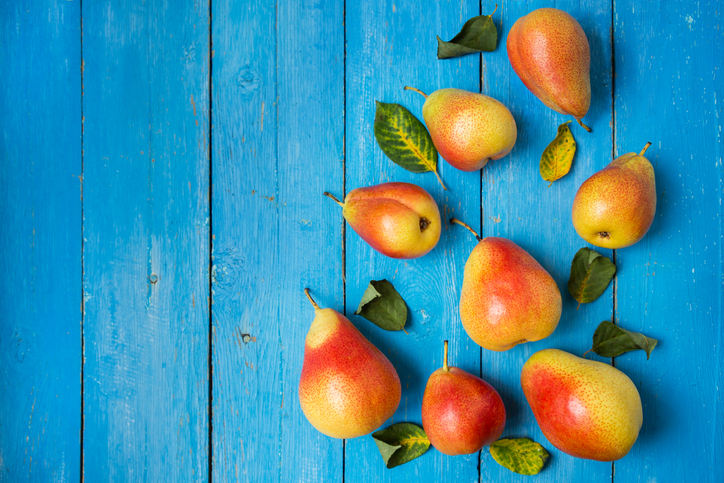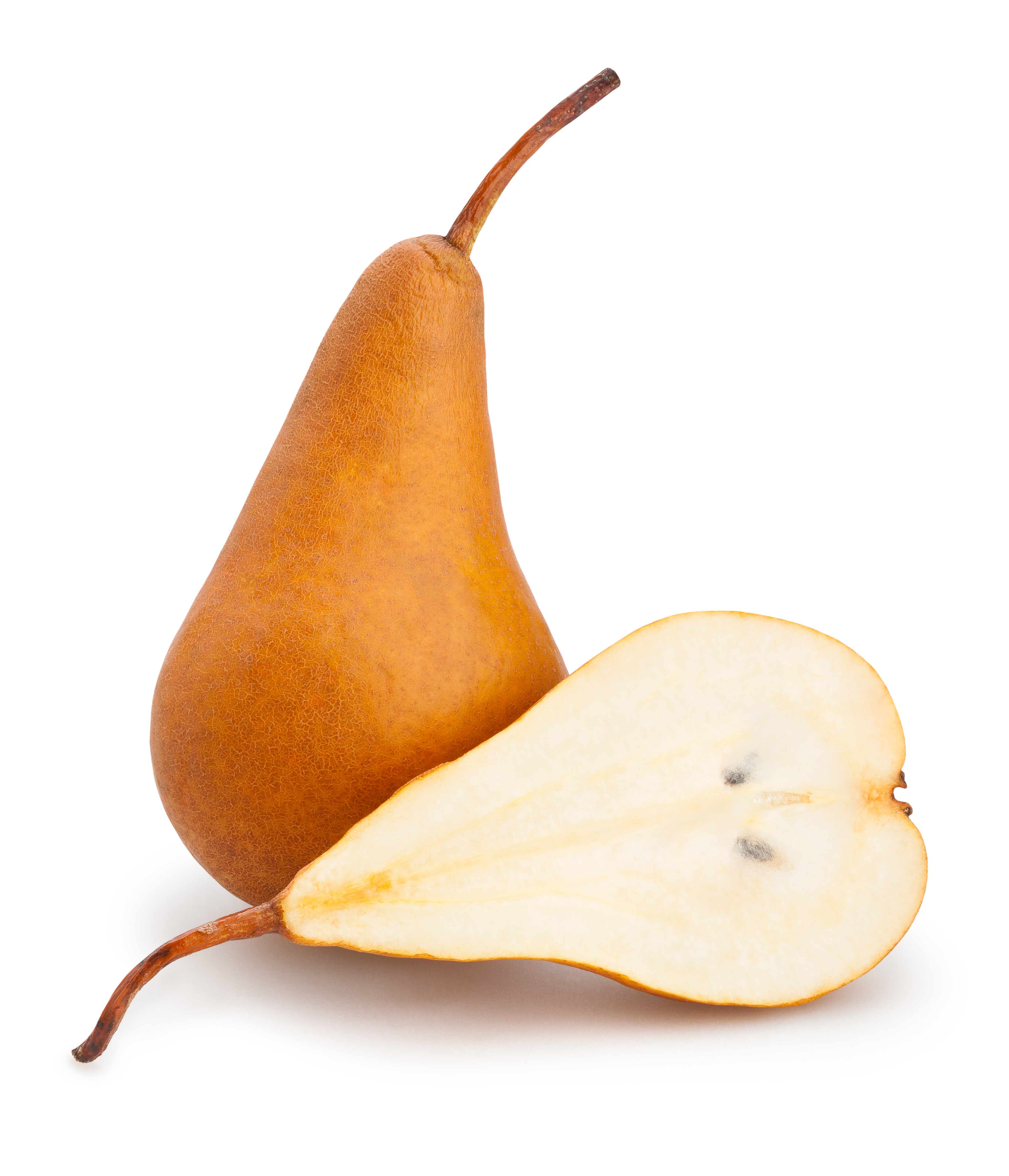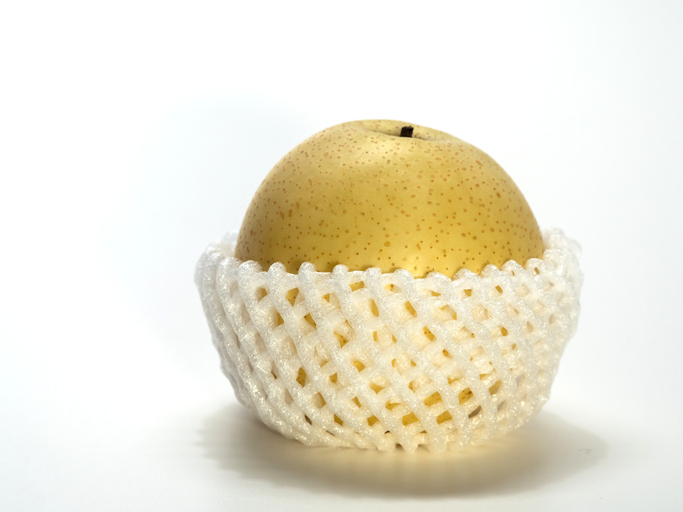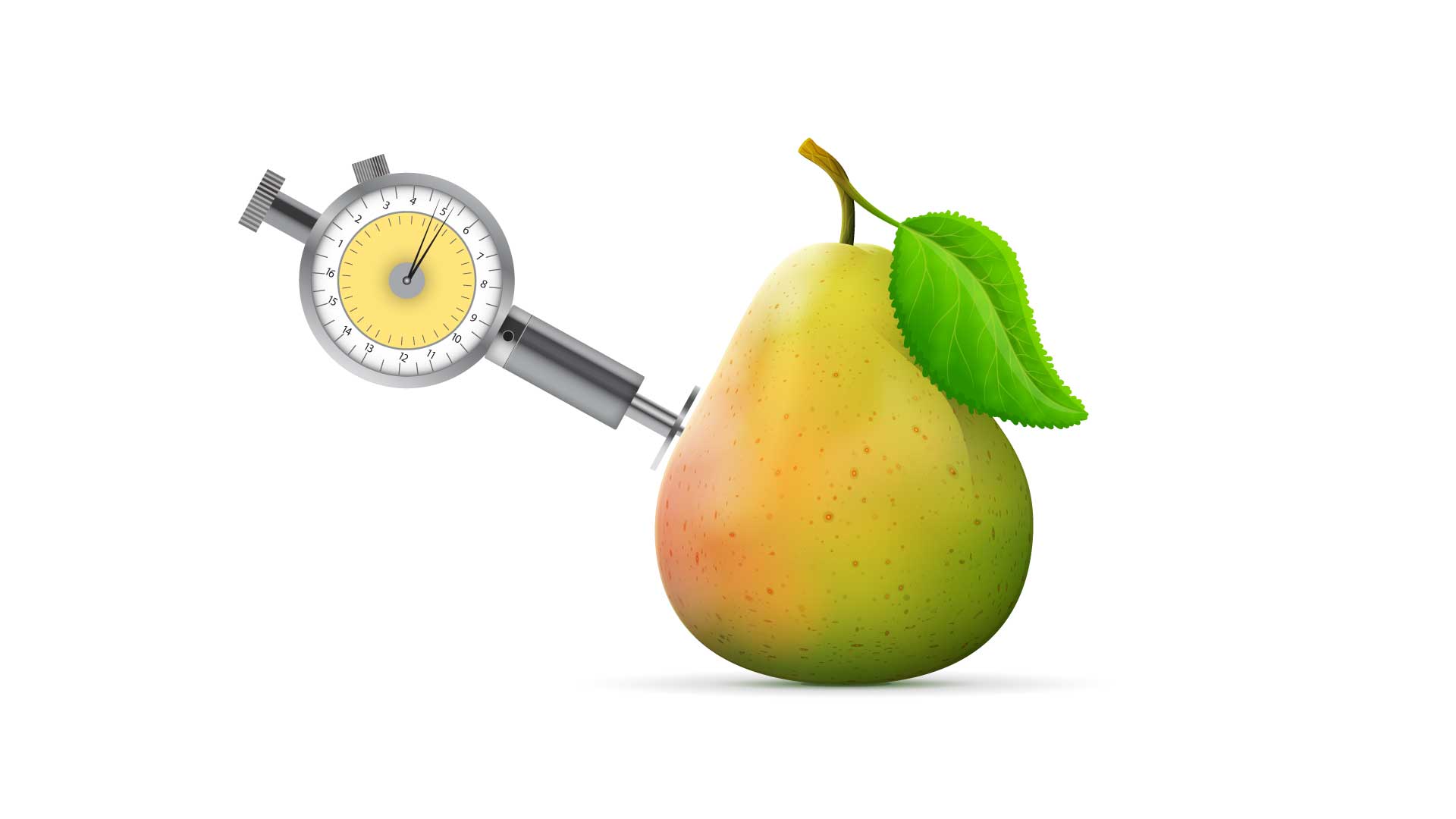
Produce 101: Pears
Learn how to choose a great pear for your menu, as well as how to ripen them in this episode of Produce 101: Pears.
What’s the best pear for poaching? What pear doesn’t usually oxidize and is great raw for salads? What pear is great for snacking? Different varieties have different kitchen roles and selecting the best one for the job can make a difference.
Ethylene can become a friend or foe when it comes to the storage and handling of your produce. Where do pears fall in relation to ethylene?
Let’s dig in.
Produce 101: Pears — Two Families
There are two main families of pears: the European pear is the most common and what we think of when referring to a pear, it’s got that elongated neck and slightly round, bulbous pear shaped base… and then we have the Asian cultivars of pears that look more like apples and are sometimes sold as Apple Pears.



Produce 101: Pears–Grades
Asian Pears
Asian pears do not have USDA specs or grades; they’re typically sold in single layer cases by count. They’re usually shipped in netted socks to prevent bruising and damage during shipment. The skin is delicate and thin, and the foam sock helps to mitigate loss.
These pears are generally “presentation” type pears and perfect for fruit baskets, where an inviting fruit with high eye-appeal is important.
Look at this pear: it’s gorgeous!

European Pears
European pears on the other hand, have two separate grading systems depending on when the pears were harvested. Summer and fall pears have one set of grades, and winter pears have another set. The vast majority of what’s available on the market are grades U.S.#1 and #2, and it’s based mostly on external looks: skin color uniformity of color of the variety, lack of scarring, and a ripeness factor.
California actually has a higher grade standard, as they do with their stone fruit, based on the overall ripeness of a pear.
Produce 101: Pears — Ripening
How do you determine the ripeness of a pear without actually biting into it? In the fields a pressure tester is used, which is a probe that determines how many pounds per square inch is required to break through the skin of the fruit. This is used to decide how ripe a pear is by commercial growers and inspectors. They take care of the first part of ripening, you take it from there.

How You Should Check for Ripeness
Since you don’t have this tool, the best way to check for ripeness is to press on the stem end, if it yields to gentle pressure and it smells like a pear—you’re ready to go.
How to Ripen Pears
What is the best way to ripen a pear? Well, it’s pretty easy—if you have a small amount, put them in a breathable bag—it could be a paper bag or a micro-perf plastic bag, and just let them sit out and ripen. They don’t like it to be completely sealed, they need some ventilation.

Produce 101: Pears — Storage and Handling
When handling pears, take care–they are *very* susceptible to bruising and scarring, as well as skin slip, so don’t stack heavy things on top of the cases, don’t drop the cases, and by all means, treat these beauties delicately, especially when ripe.
Store your pears and the coldest part of your walk-in, they like it cold, but don’t freeze them, they won’t be good to eat out of hand. The other big concern is pears produce a lot of ethylene, so take care where you put them in your walk-in–keep them away from sensitive items such as lettuces to maximize the produce shelf-life of everything in your cooler.

Produce 101: Pears — Choosing the Right Pear for the Right Job
The following infographic lists some common pear characteristics and flavor profiles, what they are best suited for, and what to look for when they are ripe.

Watch Dan as he talks about Produce 101: Pears
Contact your Sales Consultant about adding pears to your next order. If you are not a customer, find out how to become one today!
Content provided by Chef Daniel Snowden, the Director of Culinary Development for FreshPoint Central Florida. He has been in the produce industry almost 20 years and loves getting geeky about food. Additional contributions by Lisa Brizard.
Some tools you can use:
Visit freshpoint.com for our seasonal availability guides—and while you are there, check out the FreshPress, our latest market report. Place your orders online with ease at myfreshpoint.com. Did you know you can receive real-time reliable delivery alerts on the day of your delivery? Activate and subscribe at FreshPoint.com/mydelivery
Download our app and take your produce management on the go. Place orders, review flyers, watch videos…all in one spot!
Find out more details about our UBU program, and how we are shining a spotlight on food waste while making value and food safety a priority.
We buy local to strengthen regional economies, support family farms, preserve the local landscape, and to provide fresh-from-the-farm food to our customers. Local.freshpoint.com connects you to your local farmers like never before! Customize your search by zip, city, state, radius…even by crops and growing methods. Pop in your zip code and learn about our local farmers.
Socialize with us!
Did you know we are on YouTube? Head over to our page and check out our 75+ videos. Don’t forget to subscribe, and also be a part of our Bell Team—hit the little bell icon to get notifications when we upload new videos.
Follow FreshPoint, Inc. on Facebook, Twitter, Instagram, and LinkedIn…and follow The Produce Hunter on Instagram as she finds the best specialty produce at the Santa Monica Farmers Market.

